Idea by
Enrico Chinellato, Or Haklai
QUIZEPO
Call for ideas 2021
HOW TO USE A MONUMENT
HOW TO USE A MONUMENT
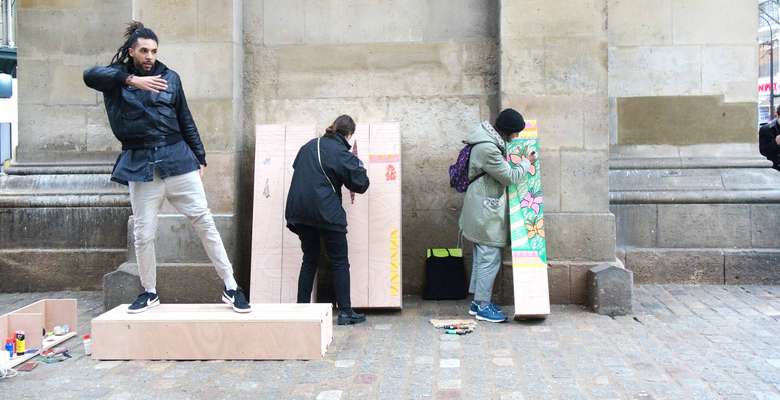
- New alliances
The project aims at bridging the time gap between the historical structures of monuments built in the past to last in the future - and the people living around it in the present. Applying a participatory design concept, it responds to current challenges of creating a more inclusive infrastructure in cities for everyone.
Using the Porte Saint-Denis in Paris as the site to test our vision, we scale down and dissect the existing monumental arch. This process creates a new object, an open urban furniture of collective use. This monument is a human-centered structure, a monument that serves the city’s everyday actions, and supports the interactions and relations happening in the streets. The mission is provokingly placing this modular urban closet under the Porte Saint-Denis arch, inviting artists and performers, along with the passerby public, to use this urban furniture as they wish: move it, flip it, store their belongings in it, sit on it, or play with it.
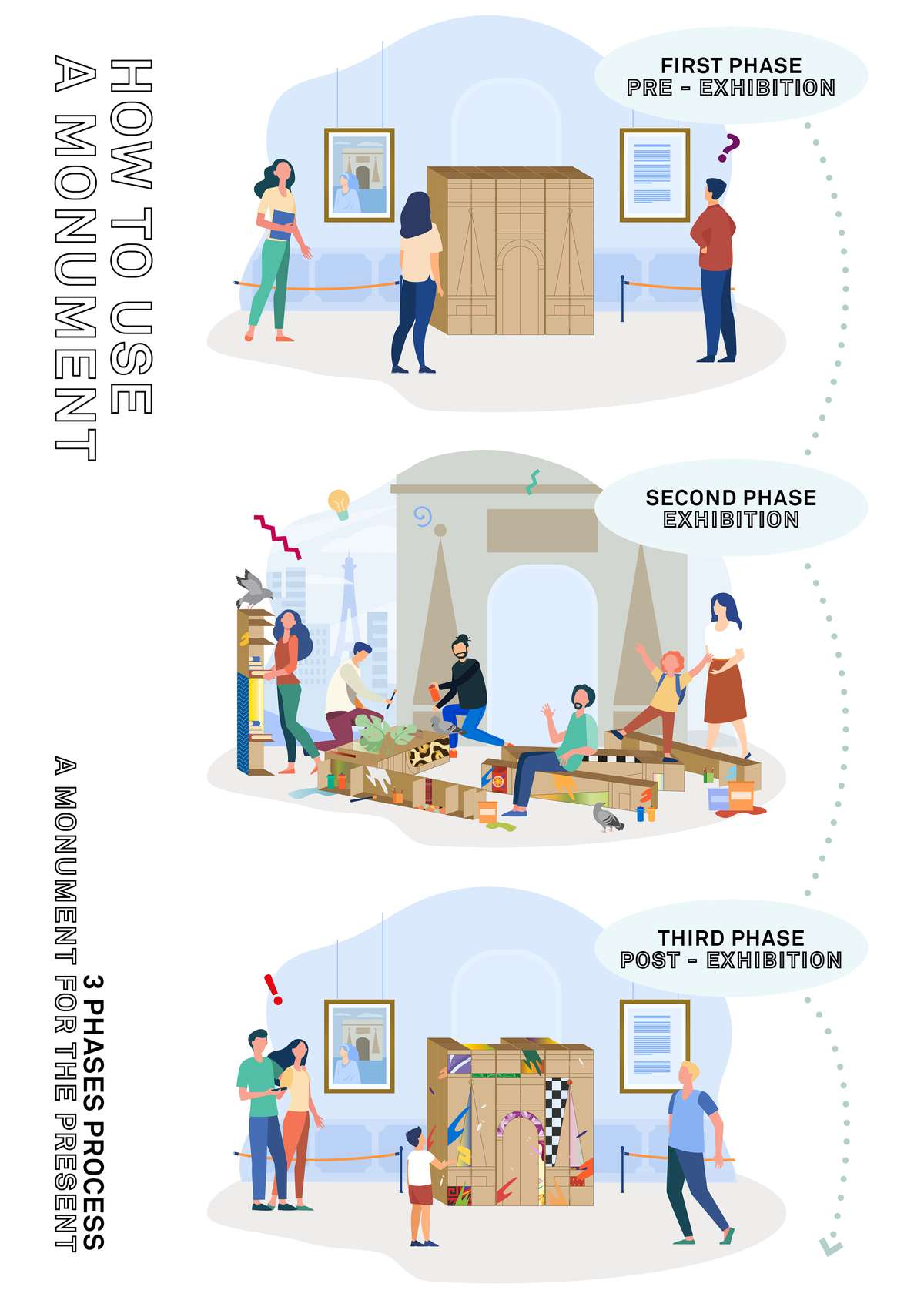
“Pre-Exhibition” phase: the monument is placed in a gallery, where the public can approach it as a symbol. “Exhibition” phase: the urban furniture travels to the city center under the full sized arch, where people can now freely play with it. “Post-Exhibition” phase: the furniture returned to the gallery space, now embodying everyday practices of the city.
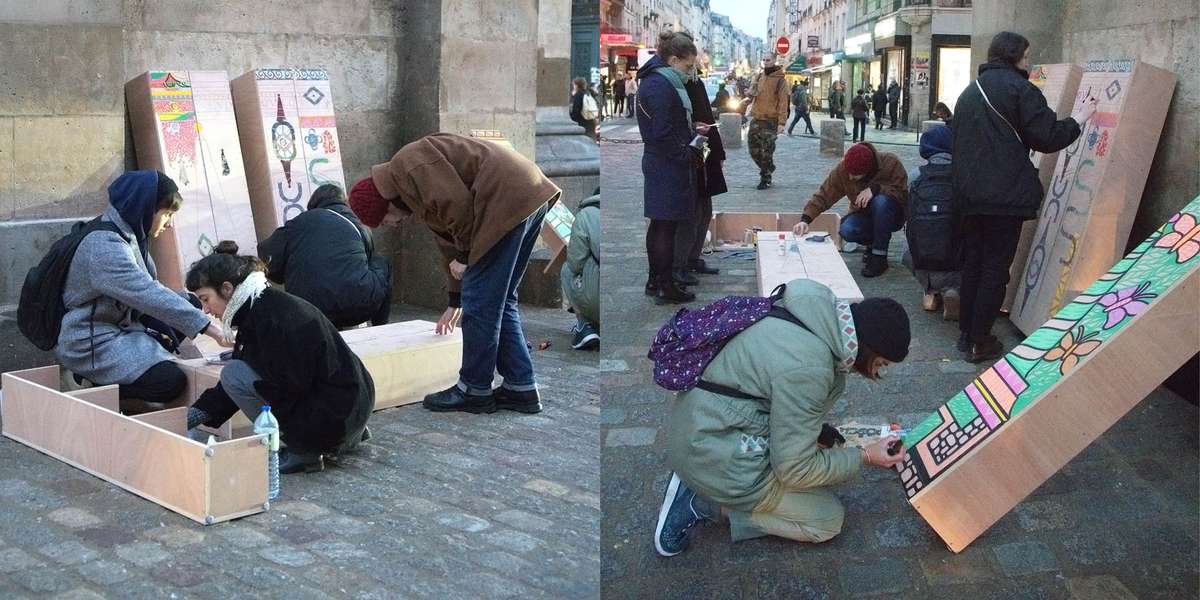
This is a participatory event: collaborations and dialogues are necessary for a successful outcome.
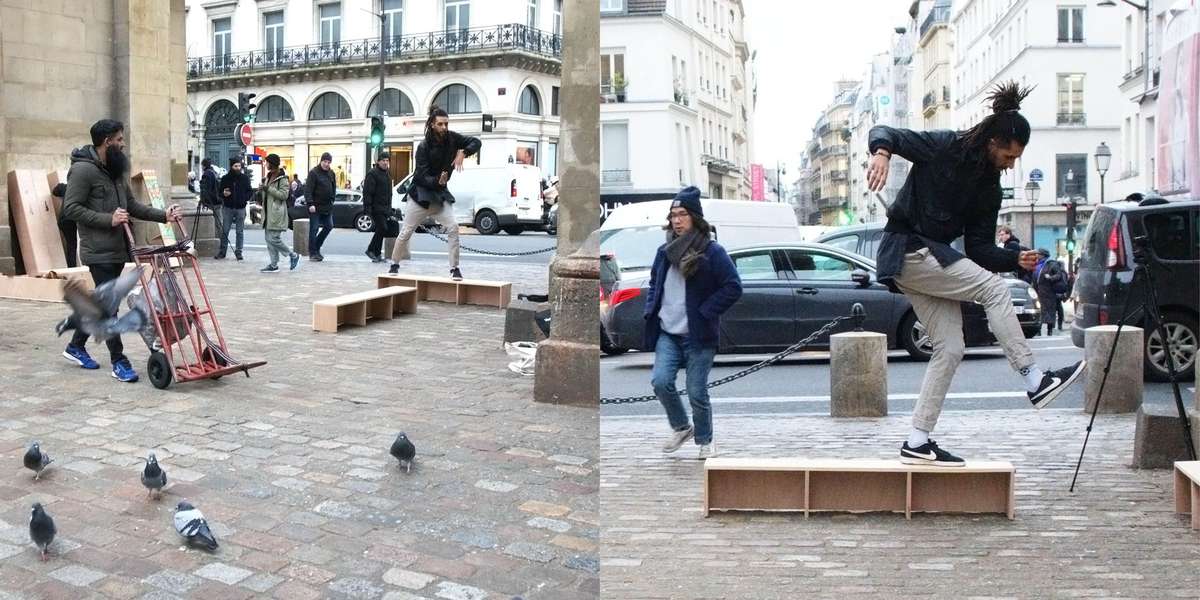
The performative aspect of the event realizes our monument concept: the ways of interacting with the monument and the city are endless, bringing a full sensorial experience with space and its non-human features.
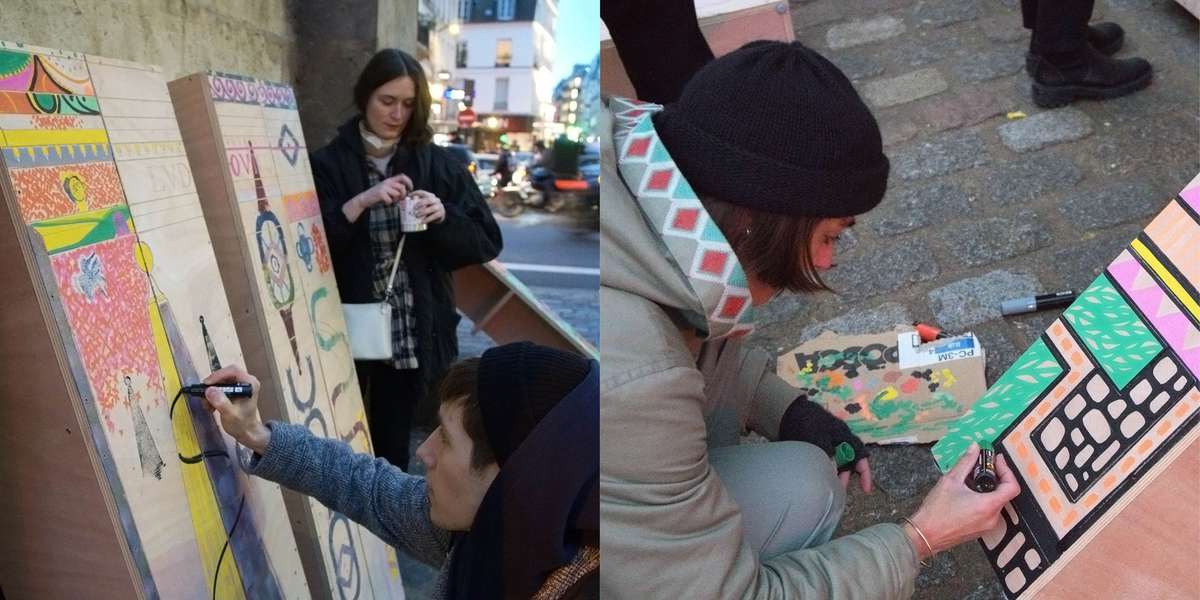
The ornaments of the Saint-Denis arch are engraved on the designed urban furniture: the public can decorate the monument in any story they choose.
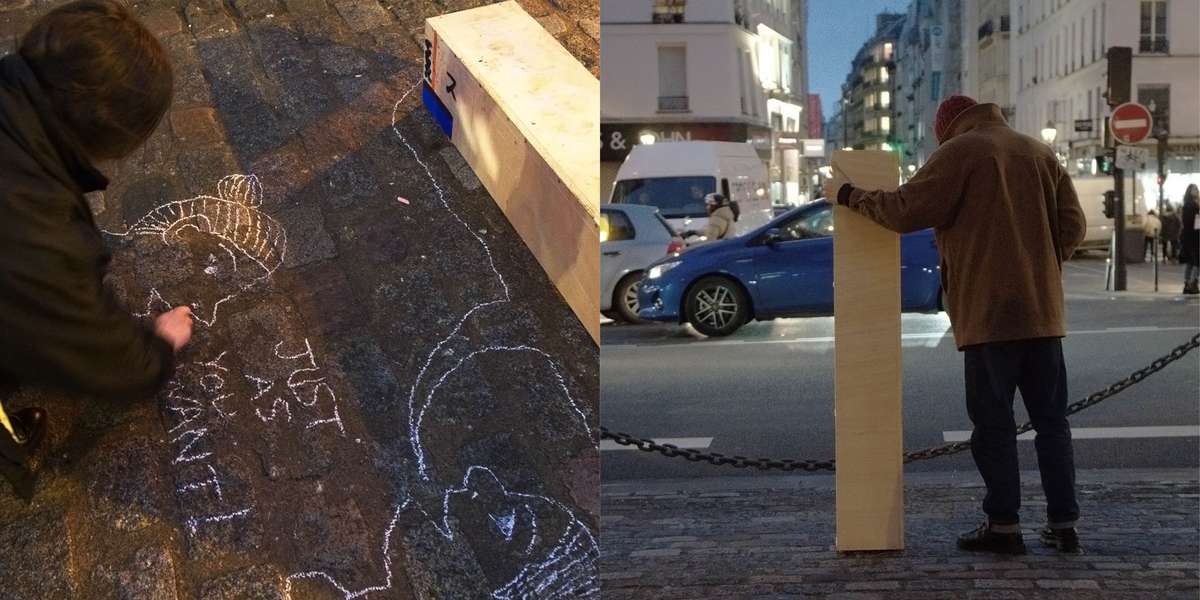
The new monument invites random and ambiguous scenarios, happenings, and statements. It can be activated at different localities adapting to their specific cultural features.
HOW TO USE A MONUMENT
HOW TO USE A MONUMENT

- New alliances
The project aims at bridging the time gap between the historical structures of monuments built in the past to last in the future - and the people living around it in the present. Applying a participatory design concept, it responds to current challenges of creating a more inclusive infrastructure in cities for everyone.
Using the Porte Saint-Denis in Paris as the site to test our vision, we scale down and dissect the existing monumental arch. This process creates a new object, an open urban furniture of collective use. This monument is a human-centered structure, a monument that serves the city’s everyday actions, and supports the interactions and relations happening in the streets. The mission is provokingly placing this modular urban closet under the Porte Saint-Denis arch, inviting artists and performers, along with the passerby public, to use this urban furniture as they wish: move it, flip it, store their belongings in it, sit on it, or play with it.
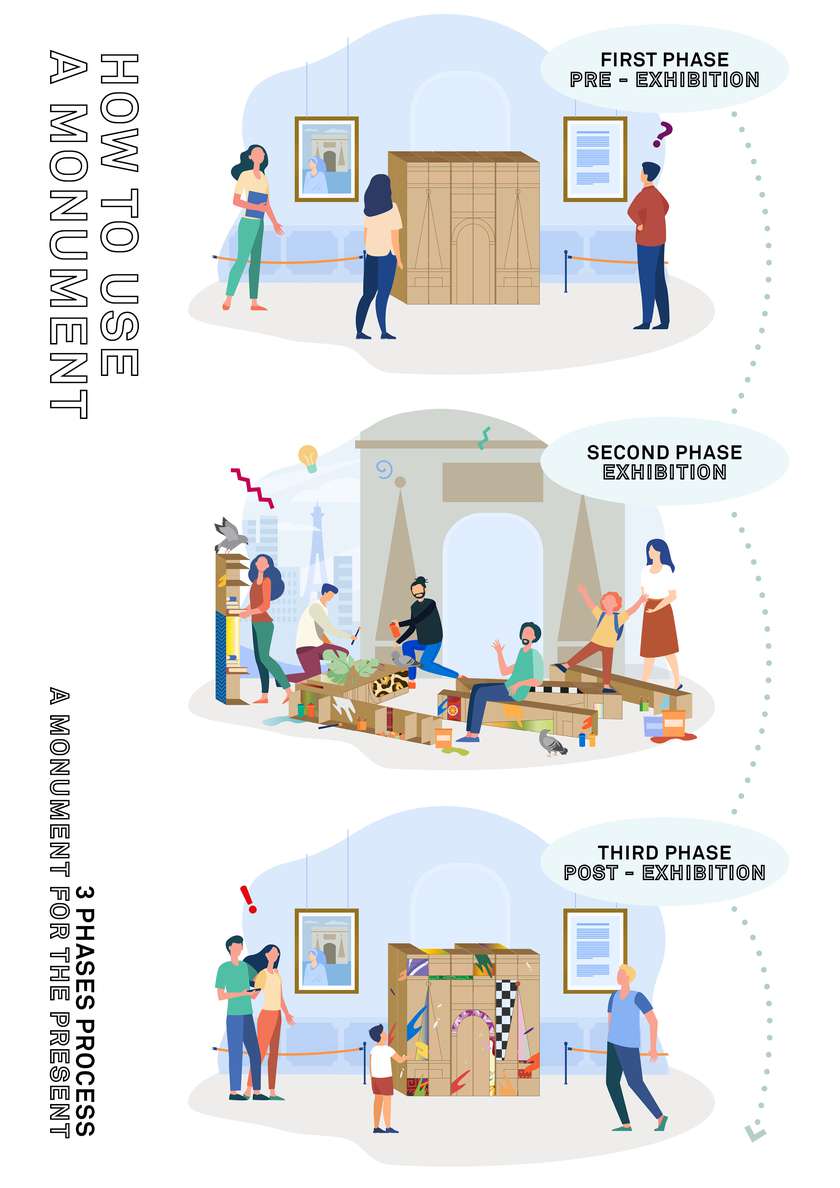
“Pre-Exhibition” phase: the monument is placed in a gallery, where the public can approach it as a symbol. “Exhibition” phase: the urban furniture travels to the city center under the full sized arch, where people can now freely play with it. “Post-Exhibition” phase: the furniture returned to the gallery space, now embodying everyday practices of the city.
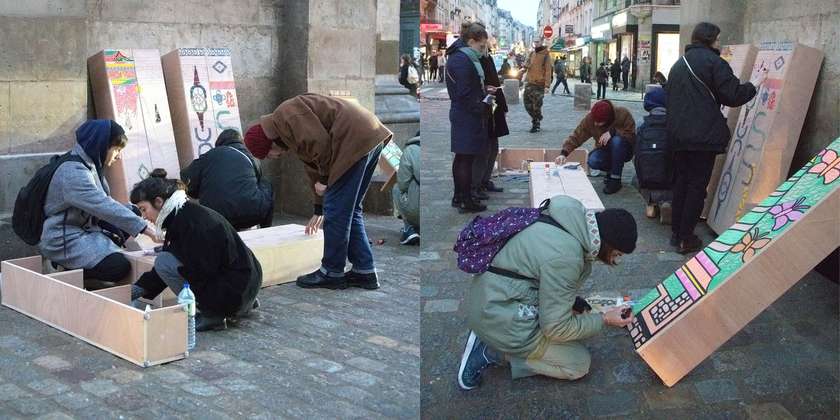
This is a participatory event: collaborations and dialogues are necessary for a successful outcome.
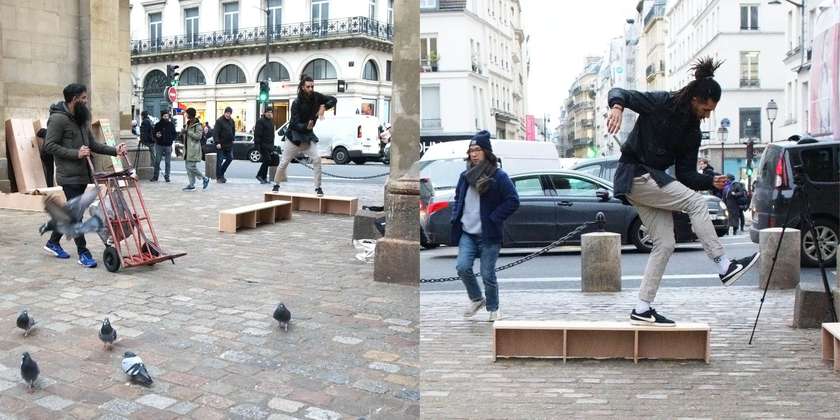
The performative aspect of the event realizes our monument concept: the ways of interacting with the monument and the city are endless, bringing a full sensorial experience with space and its non-human features.
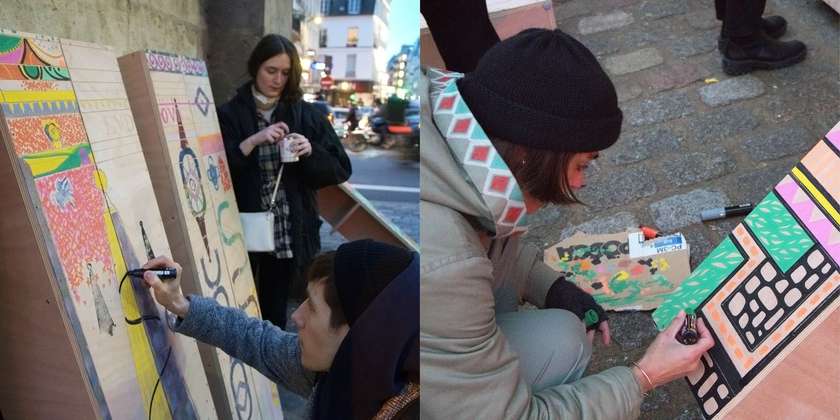
The ornaments of the Saint-Denis arch are engraved on the designed urban furniture: the public can decorate the monument in any story they choose.
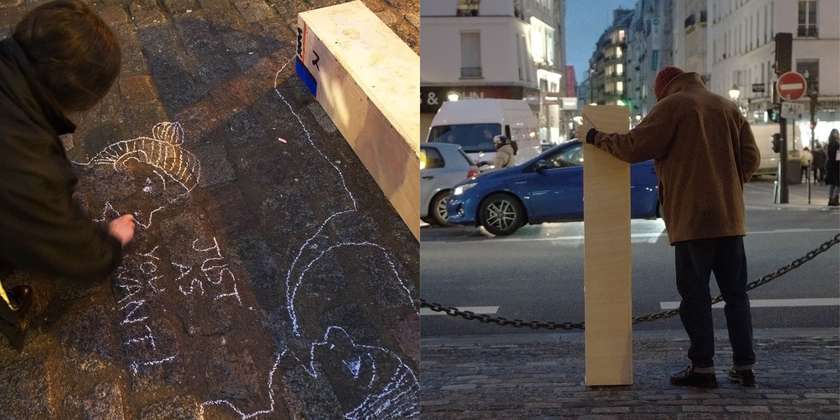
The new monument invites random and ambiguous scenarios, happenings, and statements. It can be activated at different localities adapting to their specific cultural features.